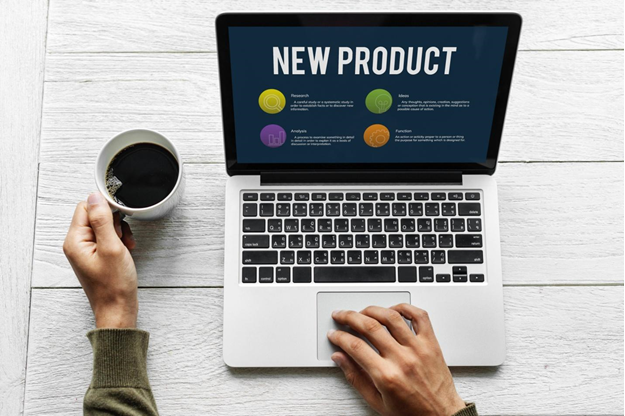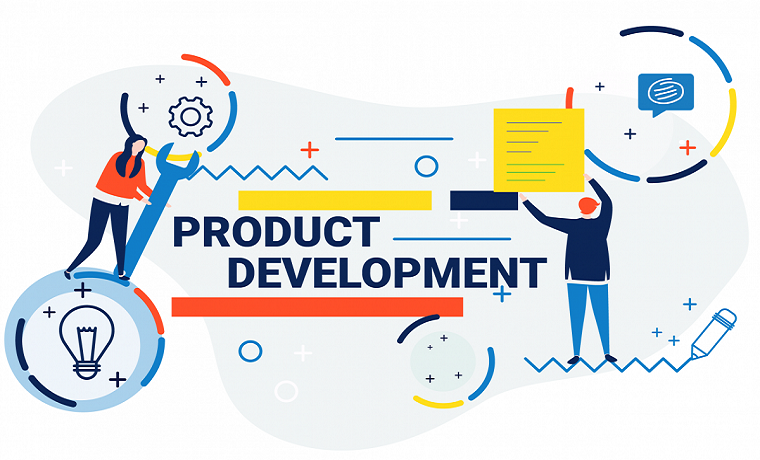Do you know how a software product is built? Though you probably have an idea, the product development process can be more complicated than you think. Read this article to learn more. We’ll reveal the five-stage model used by the most successful companies. In fact, the purpose of the product development process is to create a new sustainable product that can survive multiple market changes and bring tangible value to end users. The right product doesn’t follow the trend blindly, but rather leverages on them. While still meeting essential customer needs, let’s follow the product development process step by step.

#1 Ideation
What do you usually do to generate a worthy idea? Do you meditate or keep a journal? Actually, we don’t feel like talking about inspiration, but review tried and proven methods of coming up with creative concepts and validating them.
The first option involves using the SCAMPER tool. Not only can this method go a long way towards helping you generate ideas for creating new products, but also devise effective strategies directed at improving your current products.
Mind mapping is another worthwhile technique you want to try to generate a couple new ideas. This technique helps you to properly organize your thoughts and visualize them in the form of a diagram or some other means of graphical representation.
Furthermore, you may want to draw on your previous experience and insights to generate new ideas for developing new products. Or, if they are not relevant to your current project, broaden your horizons by exploring the most current scientific publications that can help you at the ideation phase.
Last but not least, consider tapping into the power of idea crowdsourcing. This innovative method will help you gather useful ideas and leverage a wealth of knowledge and expertise of multiple individuals from different cultural contexts. If you’re lucky to reach award-winning creators and avail yourself of their experience and valuable insights, you’ll boost your chances of success.
#2 Concept Testing
Once you sift through all available ideas, you should proceed to validate them. For this, you need to narrow down to just a couple of options, usually the ones that look more viable, and make a theoretical estimate. At the concept testing stage, you as a developer should try to put yourself in your future customers’ shoes and think about what information they might need to start using your product. At this stage, you may want to create a minimum viable product and demonstrate to your prospects the core features and functionalities of your product.
#3 Development
Once you’re done testing your ideas, you want to start looking for professional developers to translate it into reality. At this point, you should discuss the subtleties of the development process with your team of custom software developers and figure out the most efficient ways to execute your concept. Note that your product’s features should derive from tangible business and financial goals. So, it’s critical that you clearly describe the commercial objectives for the product when meeting with your software designers, testers, and project managers. This stage is particularly important to the success of your entire undertaking. Here, you should closely cooperate with your team and coordinate your efforts to develop an user-friendly interface of your product, create an effective MVP, define your user personas, and build the final interface.
Read more about software development services to make informed hiring decisions.
#4 Testing
The onus is on you to ensure your end users get a high-quality application that can deliver on its promises. For this, invest enough time and effort into quality assurance and software testing. Set standards of code quality, keep track of your development progress, detect and fix errors as soon as they surface. Integrating testing in good time will help you shorten feedback loops and turnarounds. It also can go a long way in improving your end product quality.
You can opt for both automated quality assurance tools and manual testing. While the former is great for running multiple tests simultaneously and focusing on complex user scenarios, manual testing is indispensable when it comes to evaluating your product’s functionality and feature prioritizing.
#5 Execution
Once you’re done with testing, it is time to introduce your end product to the public. Upload your codebase to the dedicated server either using a feature-by-feature algorithm or dumping the entire app functionality to your server.
Hope our simple guide will help you create a successful product that will help you take your business to the next level.

